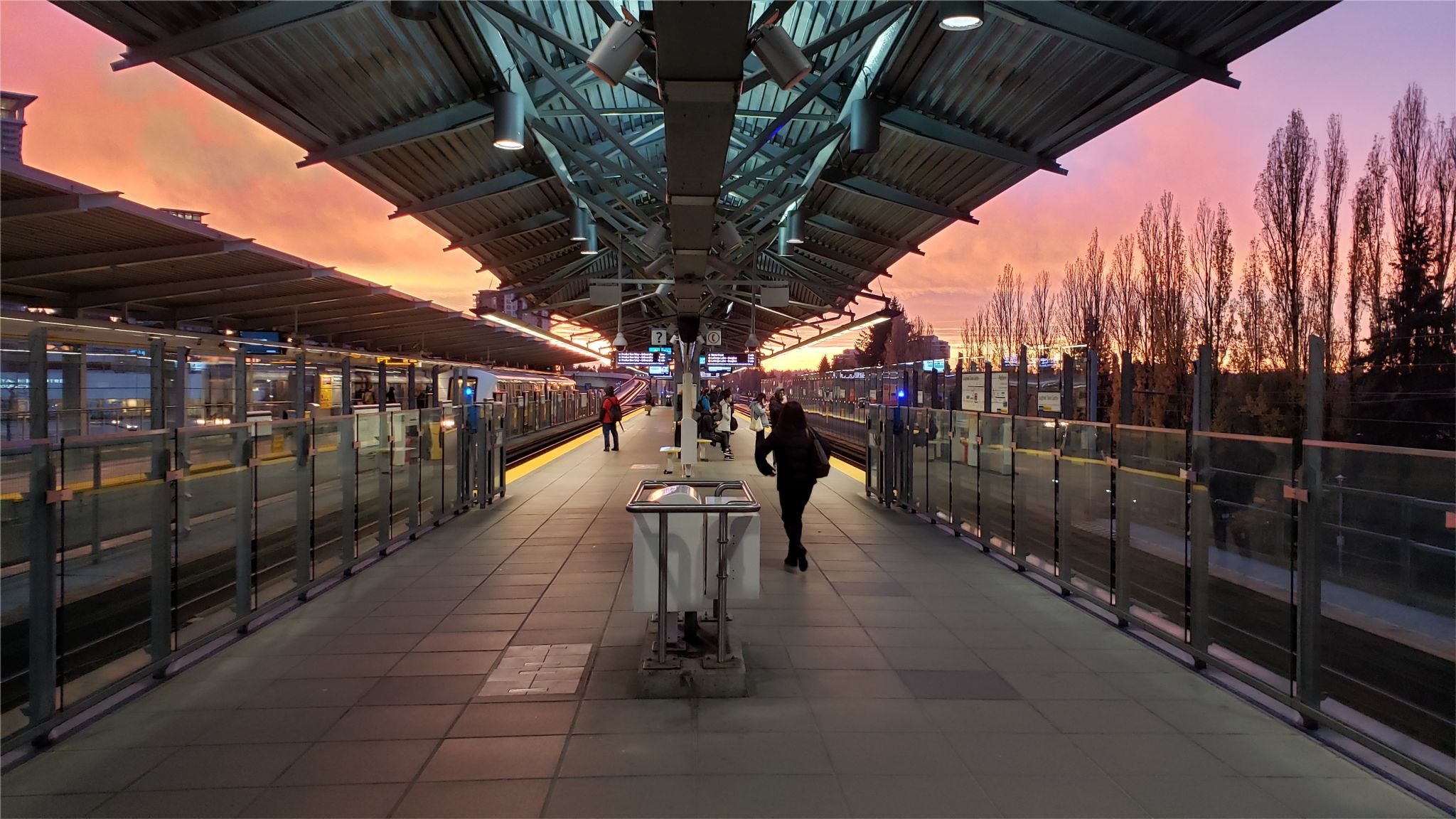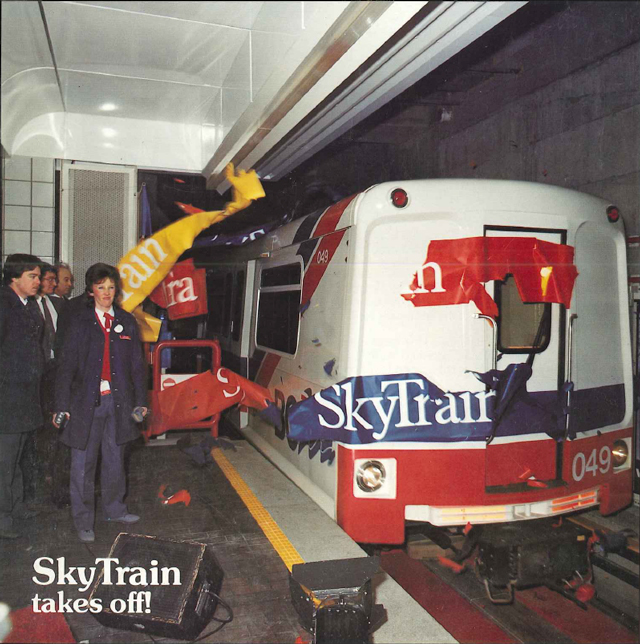What TransLink’s Climate Action Strategy means to me and you
What TransLink’s Climate Action Strategy means to me and you

As a boy, my vacations were spent on Lake Winnipeg. Over the years, I witnessed the amazing return of bald eagles and white pelicans from near extinction due to the pesticide DDT.
Growing up on the prairies and studying quantum physics also gave me a big picture view of the world. But I really understood my path in 1993 when a Danish architect showed me a home that produced more energy than it consumed.
It all made sense. That with the right people and commitment, we can tackle the climate emergency. It is singlehandedly the greatest threat facing us today and future generations. We all have a role to play and reducing our greenhouse gas emissions to zero is key.
Our newly released TransLink’s Climate Action Strategy maps an aggressive path to zero greenhouse gas emissions (GHGs) for Metro Vancouver’s public transit system.
Driving a car is one of the most polluting ways to get around. Each person driving alone contributes to 2.30 kg of GHG emissions.
On the flip side? When you ride the SkyTrain or an electric bus, that trip reduces your greenhouse gas emissions by over 99 per cent compared to driving. Ninety-nine per cent!
And in Metro Vancouver, transportation accounts for 35 per cent of the region’s greenhouse emissions. Yet, transit accounts for only 2.7 per cent that.
But we know there’s more we can do. We need to go for zero.
The Climate Action Strategy sets new ambitious goals, including:
- Net zero GHGs by 2050 for our operations
- Zero emissions from our bus fleet by 2040.
- 45 per cent reduction of GHGs by 2030 (over 2010 levels)

Since the Industrial Revolution, the global temperature has consistently risen each year. We’re on a destructive path towards a future where a livable climate is no longer possible.
But we have yet to author this story’s final act. We can still take collective action to reduce our greenhouse gas emissions. But the need for action is urgent.
The time for action is now
The UN Intergovernmental Panel on Climate Change (IPCC) estimates globally we need to limit global warming to 1.5°C to avoid pushing the global climate system past its critical thresholds. The only path we have is to achieve net zero globally by 2050.
That year is only a generation away. What we do in the next eight years is critical to determining the climate in the second half of this century.
The Climate Action Strategy is what we’re doing, but we also need you. When you take transit, you are a part of the solution to the climate emergency.

When you get out of your cars and choose alternatives like transit and active transportation, you’re moving more efficiently with less energy. You’re also reducing road congestion and the associated GHGs and air pollution.
But our Climate Action Strategy doesn’t stop at greenhouse gas emissions. We are also building towards climate resiliency.
Extreme weather events like what we’ve seen in British Columbia over the last year, from heat domes and wildfires to flooding and other shocks to the region are becoming more common and more devastating.
That means we need to adapt our infrastructure and operations to this new reality. We need to reduce risks and build resilience, enabling the region and our customers to rebound and recover from severe weather events.
And importantly, we need to recognize that zero emissions and clean public transportation should not just be for people who can afford it — it needs be accessible by all/everyone, regardless of ability.
At TransLink, we have a saying: together all the way. We’re working with you to build a shared future where we have a climate resilient and net-zero public transportation system — and we’re well on our way.
Let’s build on our legacy
Metro Vancouver’s had a storied history when it comes to electric public transit — in fact, since the very beginning.
The first transit vehicle that rolled into service on June 27, 1890 was an electric streetcar down Vancouver’s Main Street. Then when it came time to replace the streetcar in the 1940s, we reaffirmed our commitment electricity-powered transit. We chose trolley-electric buses to replace the streetcar.
Then as our cities grew after World War II and the car reigned supreme, we continued our steadfast commitment to electric transit. We didn’t build more roads. We built an all-electric SkyTrain instead to move people from the suburbs into the urban core.

Today, the SkyTrain is one of the world’s most efficient and longest automated rapid transit systems. We are also the only transit system in Canada still operating trolley buses and it is one of the largest fleets in North America.
That’s why transit is already one of the greenest ways to get around in Metro Vancouver.
It’s an epic journey that started in 1890 when the first public transit vehicle rolled onto the scene. But it receives a supercharge today with TransLink’s Climate Action Strategy, culminating with net zero in 2050.
To learn more, please visit translink.ca/climate.
Ralf Nielsen, TransLink's Director of Enterprise Sustainability
Ralf joined TransLink in September 2021. He came to TransLink with diverse sector experience – from transportation, real estate, government, and manufacturing. In his 26-year career in Canada and the United States he’s held progressively senior roles where climate and sustainability intersect with business strategy and risk management. In 2016, he was recognized for his sustainability leadership by becoming an honouree of Canada’s Clean 50.






Slow Electrification by TransLink
Because of bad governance, lack of proper vision and relaying on staff and consultants recommendations, TransLink started late ( compared to other big Canadian Transit Systems that started up to five years earlier ) in electrifying their fleet
Closing two bus garages and selling off public land did not help
Not having garages for the 349 HandyDART buses ( Like Victoria BC does ) is a mistake.
Concentrating the 206 Community Shuttles in 3 garages. instead of all 7 garages is another mistake. This results in increasing the cost of delivering these important services. The cost per passenger has increased up to $25 per trip!!.
Not following other transit systems that combine the Para-Transit HandyDART System with the Community Shuttles is another mistake that increases the operating and capital costs.
Between 2026 and 2030, HandyDART vehicles will be gradually phased to zero-emission models.Starting in 2031, community shuttle buses will also undergo a gradual transition to zero-emission models, while support service and maintenance vehicles will transition to electric-battery and hybrid models.
Continuing wasting money on CNG buses is another mistake. ( It was mandated by the previous Liberal Government and not stopped by the current NDP Government )
The delay of building new GREEN garages ( without affordable housing above ) is another mistake!!
Marpole Transit Centre will be built on the Fraser River industrial waterfront in Vancouver, just west of the Canada Line bridge. Along with maintenance and bus parking facilities, this major bus depot dedicated to 300 electric-battery buses would also have significant charging infrastructure.The public transit authority previously set 2023 as the target completion date for Marpole Transit Centre, but the project is now delayed to 2027.
Not converting the newest SeaBus to electric is another mistake. This SeaBus was delivered defective in 2019 and while modifying it for two years electrical infrastructure could have been installed.
WCE Train Fossil Fuel Locomotives could be changed to Hydrogen like it is being done by other rail systems. https://www.electrive.com/2022/01/20/ballard-receives-order-for-train-fc-module/
Not applying for available governments funding for bus shelters ( BC Transit applied and received funding ); Not completing the enclosing of train tracks at SkyTrain Stations ( It was done in Surrey BC )
TransLink adds it will also focus on improving passenger comfort from weather, such as building more protection from the elements while waiting for buses and trains,
you guys said it yourself! expensive battery electric buses and expensive technology like the skytrain are not going to last the test of time as long as simple trolley lines. bring back the street cars and add even more trolley buses!
As the year 2022 began, many of us sought a fresh start, hoping to put the extreme weather events of 2021 behind us. After all, it was a historic year.
You need to know all the bus routes to know where the problems are. TransLink wasted over $1M on a stupid bus stop balancing program
TransLink’s Climate Action Strategy is a big step toward reducing emissions and improving sustainability. It’s inspiring to see such a commitment to a greener future.